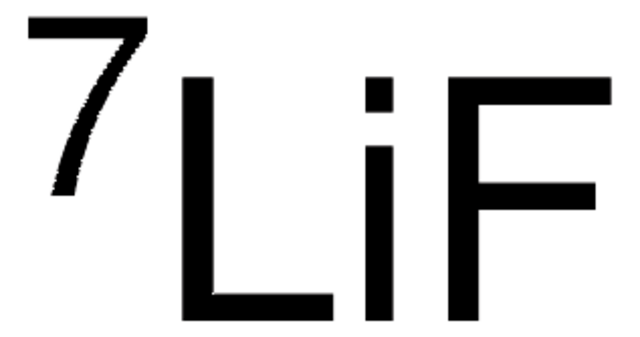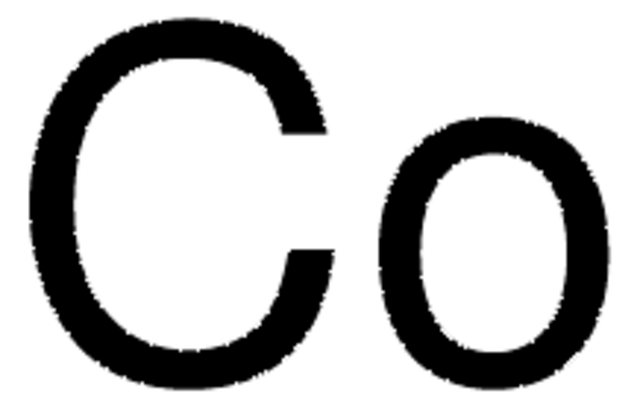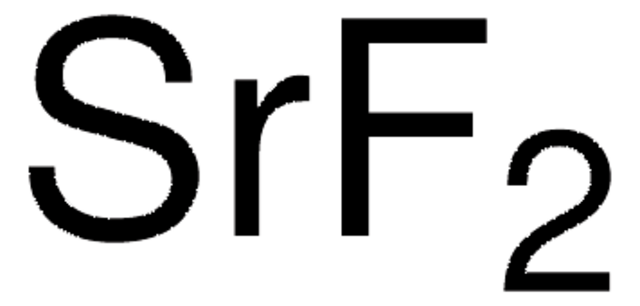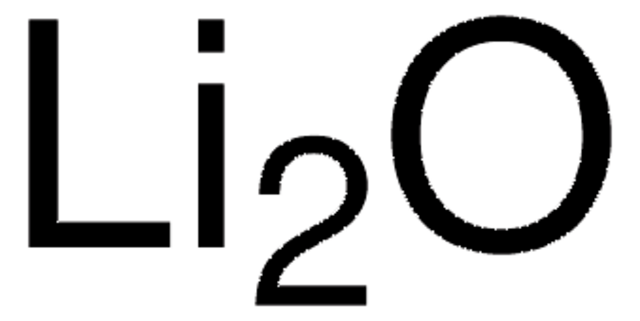449903
Lithium fluoride
≥99.99% trace metals basis
Synonym(s):
Fluorolithium
About This Item
Recommended Products
grade
anhydrous
Quality Level
Assay
≥99.99% trace metals basis
form
powder and chunks
greener alternative product characteristics
Design for Energy Efficiency
Learn more about the Principles of Green Chemistry.
sustainability
Greener Alternative Product
impurities
≤100.0 ppm Trace Metal Analysis
bp
1673 °C/1 atm (lit.)
mp
845 °C (lit.)
solubility
aqueous acid: slightly soluble(lit.)
density
2.64 g/mL at 25 °C (lit.)
greener alternative category
SMILES string
[Li+].[F-]
InChI
1S/FH.Li/h1H;/q;+1/p-1
InChI key
PQXKHYXIUOZZFA-UHFFFAOYSA-M
Looking for similar products? Visit Product Comparison Guide
General description
Application
- As an additive to fabricate SiO@C/graphite composite anode materials for Li-ion batteries. LiF stabilizes solid electrolyte interphase (SEI) and enhances initial coulombic efficiency.
- As a critical component in SEI for stabilizing the SEI layer and improving the cycling efficiency of Li metal batteries.
- To fabricate electron contacts for high-efficiency n-type crystalline silicon solar cells.
- To prepare solid-state light sources for radiation imaging detectors.
- To synthesize highly crystalline MXene for asymmetric supercapacitor applications. And also, lightweight, flexible, and hydrophobic MXene foam with reasonable strength, high electrical conductivity, and an outstanding EMI-shielding performance.
- As an electron-injection layer to fabricate ITO/PEDOT:PSS/perovskite/B3PYMPM/ LiF/Al OLED device with a quantum efficiency of 20%.
Signal Word
Warning
Hazard Statements
Precautionary Statements
Hazard Classifications
Acute Tox. 4 Oral - Eye Irrit. 2
Supplementary Hazards
Storage Class Code
6.1D - Non-combustible acute toxic Cat.3 / toxic hazardous materials or hazardous materials causing chronic effects
WGK
WGK 2
Flash Point(F)
Not applicable
Flash Point(C)
Not applicable
Personal Protective Equipment
Choose from one of the most recent versions:
Already Own This Product?
Find documentation for the products that you have recently purchased in the Document Library.
Customers Also Viewed
Articles
Professor Gogotsi and Dr. Shuck introduce MXenes: a promising family of two-dimensional materials with a unique combination of high conductivity, hydrophilicity, and extensive tunability.
Research and development of solid-state lithium fast-ion conductors is crucial because they can be potentially used as solid electrolytes in all-solid-state batteries, which may solve the safety and energy-density related issues of conventional lithium-ion batteries that use liquid (farmable organic) electrolytes.
Our team of scientists has experience in all areas of research including Life Science, Material Science, Chemical Synthesis, Chromatography, Analytical and many others.
Contact Technical Service










